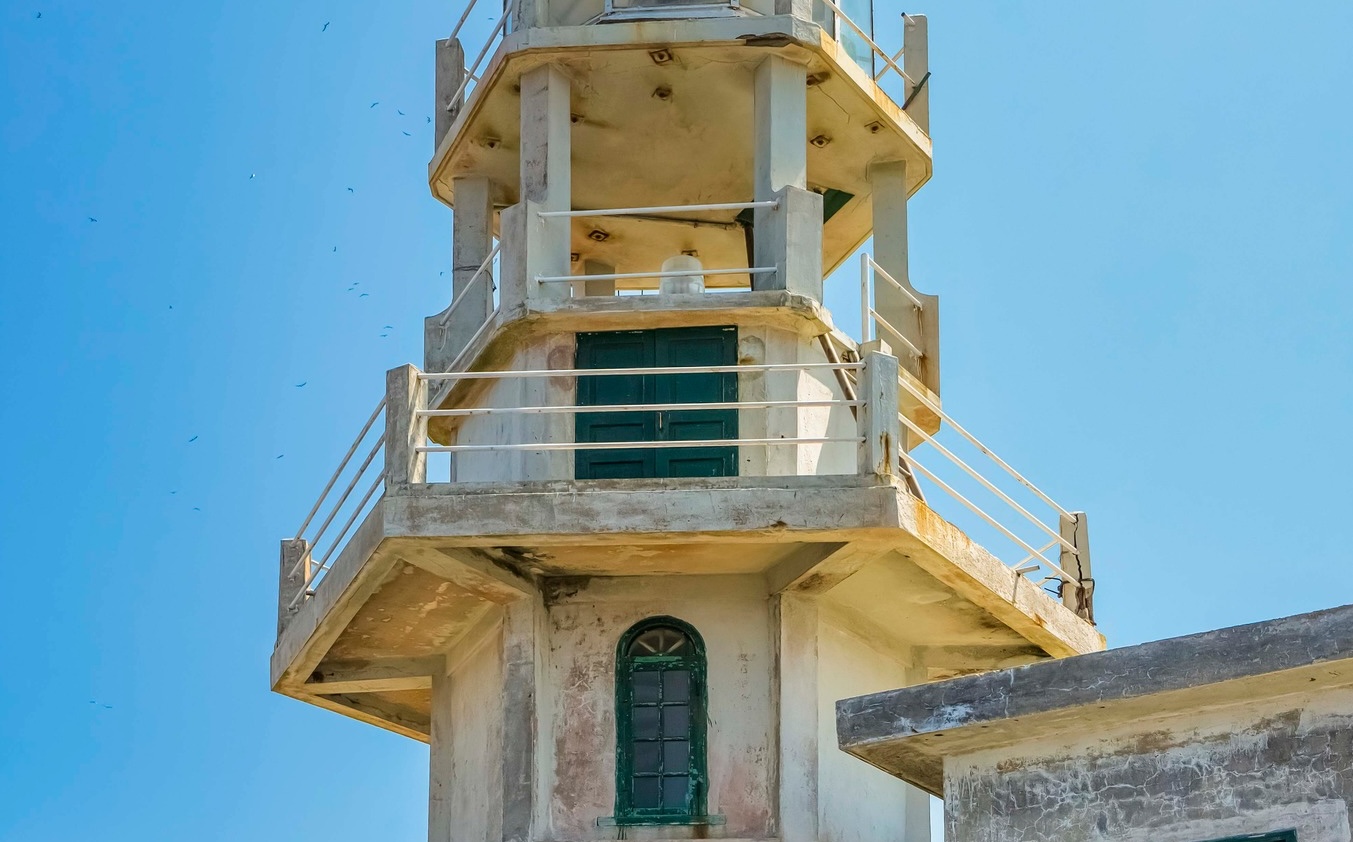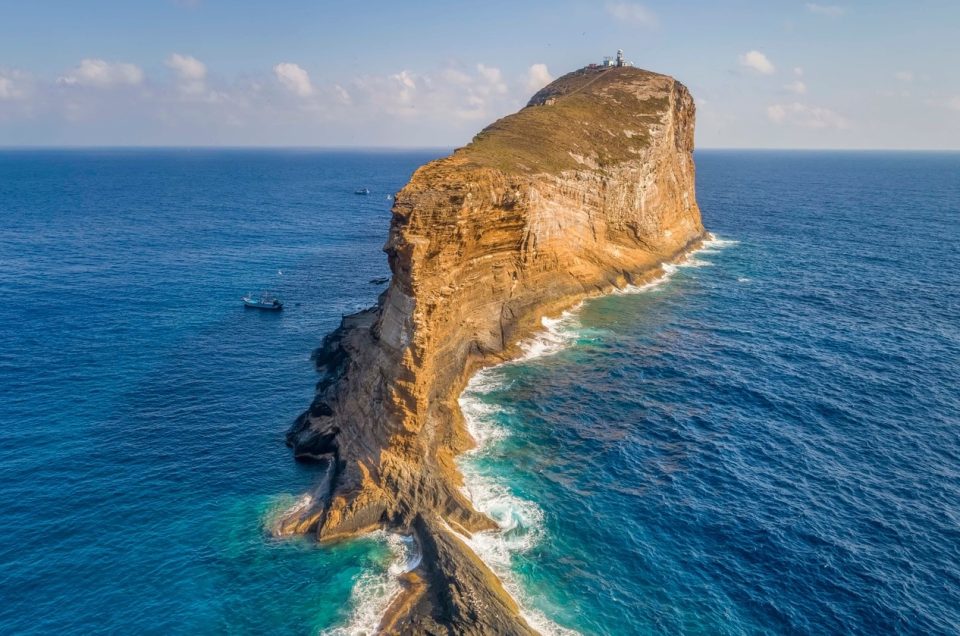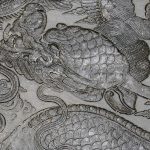Hai Island
After a ride over silver waves, we arrived at Hon Hai Island, 65 kilometers from Phu Quy Island. At first glance, this uniquely shaped island seems lonely amidst the vast sea. It holds a critical position in the nation’s defense. From a horizontal perspective, the island resembles a traditional slipper, while, seen from above, its shape is similar to a giant sperm whale with a square head and wagging tail. Hon Hai impressed us with its magnificent nature, boasting steep rocky cliffs, white-foam waves, dark blue sea water, and fluttering fairy terns and seagulls. Looking out from Hon Hai Lighthouse, the highest point on the island, we could appreciate the immensity and purity of Vietnam’s East Sea. This lighthouse may be seen from around 26 nautical miles (equivalent to 50 kilometers) in the daytime and 20 nautical miles (equivalent to about 35 kilometers) at nighttime. It plays an essential role in helping boats and ships to navigate the waters of Binh Thuan.
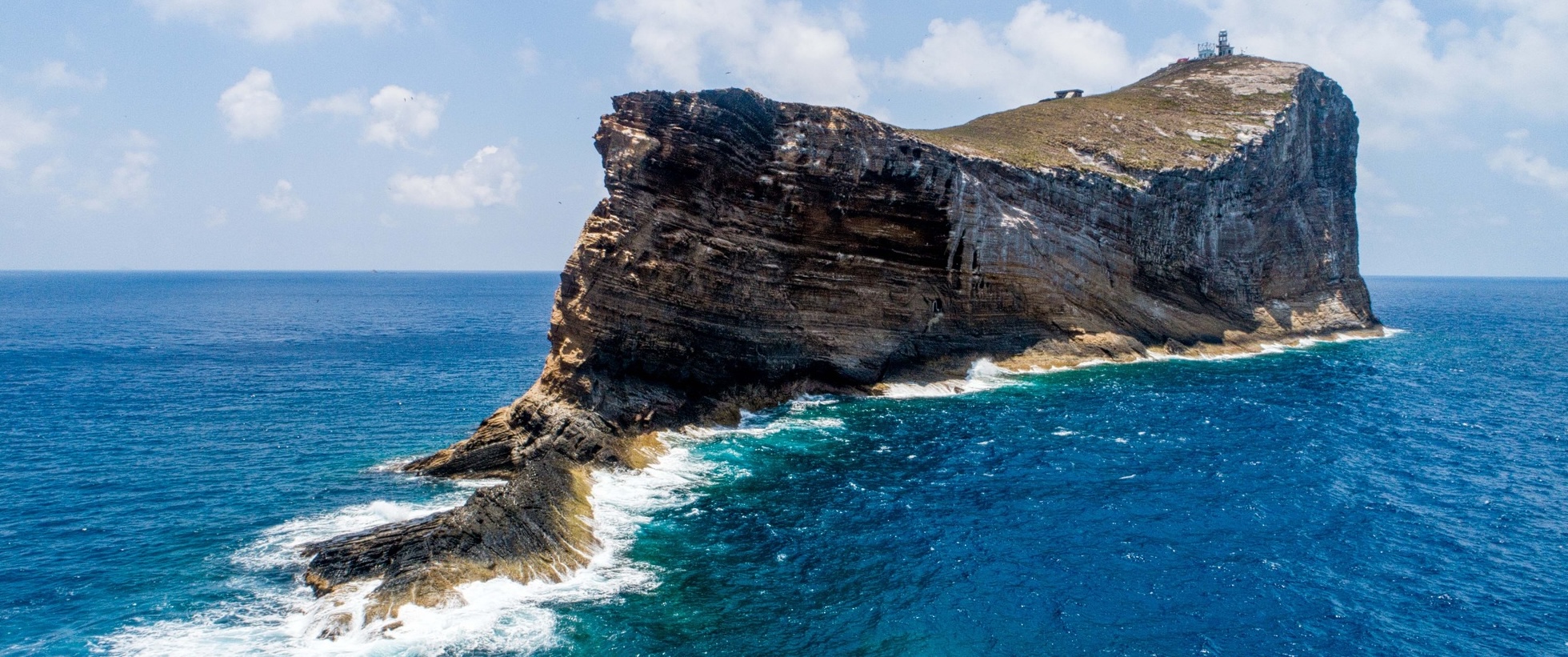
Lighting a lamp is to light up hope. However, shining a light onto the distant sea involves challenges. The lighthouse’s construction was so challenging that 20 years after it was built, people still discuss the difficulties. First, a road had to be built leading to the highest point on the island. Given the harsh weather, complicated topography, and erratic patterns of winds and waves, the initial plan to build a road up one side of the island was replaced by an innovative and unique design: a tunnel with a 30-degree slope was built from deep underground to island’s surface.
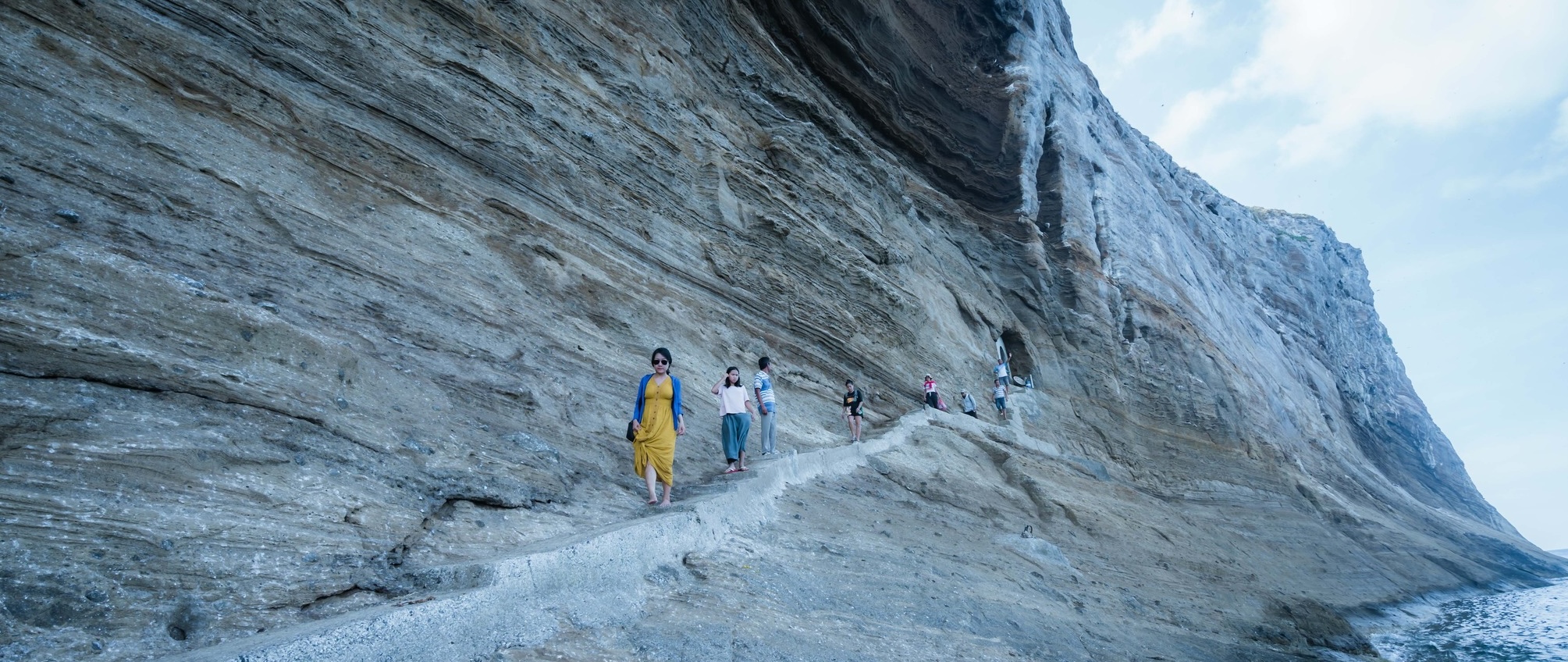
Only 1.5 meters wide and 2.4 meters high, this tunnel contains hundreds of stone steps. Despite the confined space and harsh conditions, it was made with a high level of scientific precision. The engineer corps triumphed over geological and hydrological hardships and disadvantages to build this tunnel. After many years, it became the foundation that allowed the construction of the Hon Hai Lighthouse.
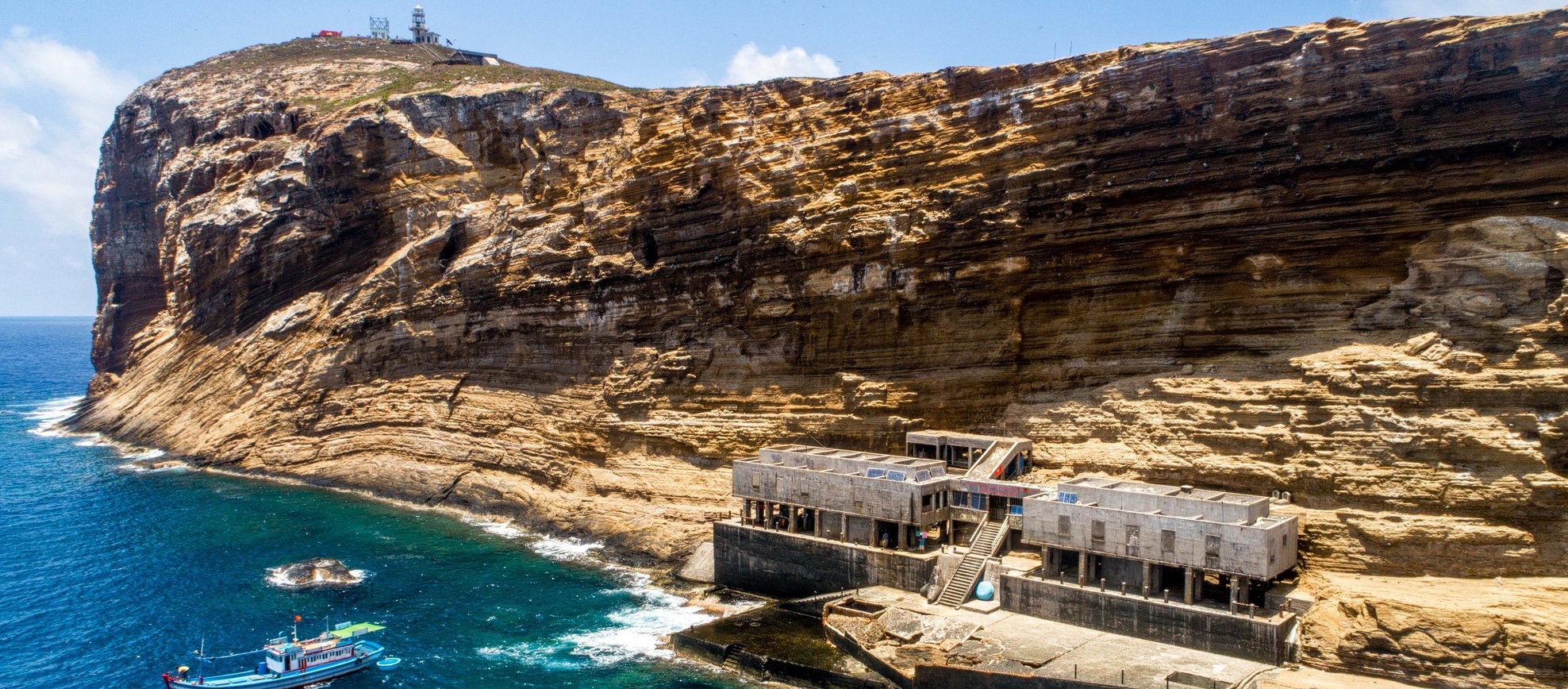
Due to the deep sea and fierce waves that shake the whole island, it is impossible to build a harbor or locks – areas to safely shelter boats. It was a difficult mission to transform a “giant rock” with no trees or freshwater into the A6 Base Point, which marks the furthest point of Vietnam’s internal waters on the East Sea. This achievement was a story of national pride and unrelenting patriotism.
